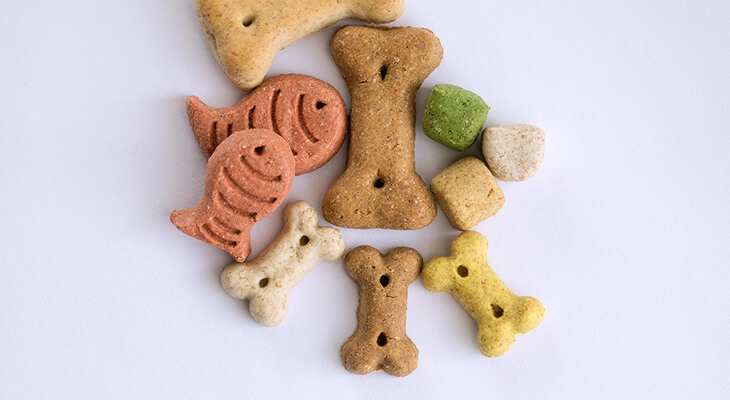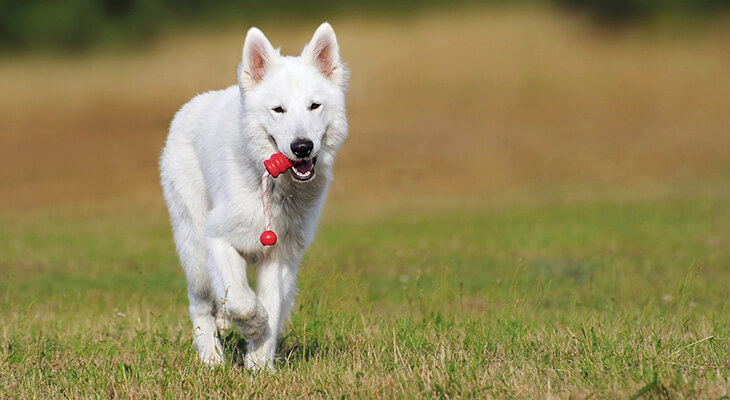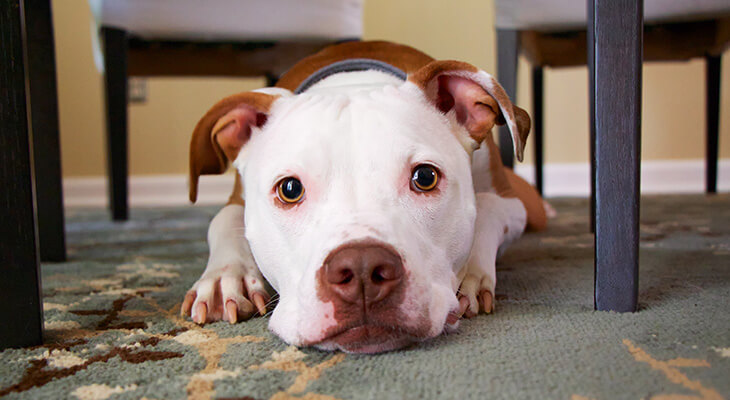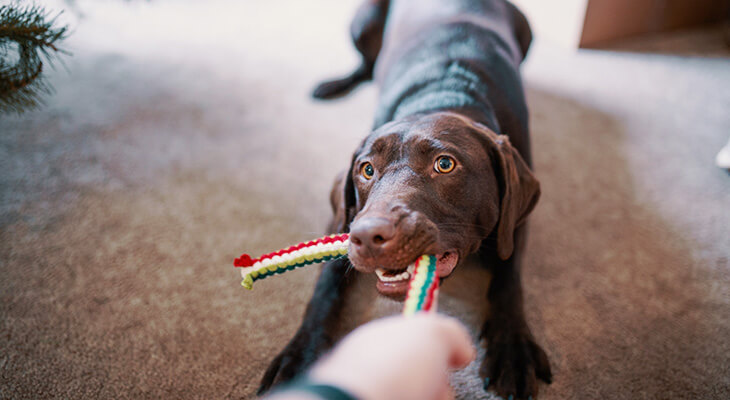A lot of dog owners often wonder how to raise the perfect dog? Get expert suggestions and advice on how to raise your adorable pup to a thoroughbred canine. All of them start with learning the secrets of easy puppy training.
Little puppies are cute and cuddly little pets. Along with pampering and loving it, dog owners also need to be good dog parents. As it grows older, it is up to you to ensure that it grows from an adorable, fluffy friend to a loyal, well-mannered, and intelligent pet dog.
Contents
10 Steps To Raising The Perfect Dog
Here are simple steps to follow for raising an awesome dog:
1. Settling Down Time:
A little pup should not be weaned from its mother before it is about eight weeks old. As with all little babies, pups need to feel secure and protected. Once you bring the bundle of joy to your home, remember to give it sufficient time to settle down. Shower it with lots of love and care so that it feels protected. You should never rush into puppy training in the initial stages of the puppy coming home. Puppies who feel vulnerable and insecure are more likely to engage in irritable and undesirable behavior.
2. Crate Training:
Crate training is one of the most important aspects of puppy training. A comfortable and cozy crate is essential to ensure the quick success of crate training. Always keep your pup in a crate that is appropriate to its size – neither too big nor too small. A crate or playpen acts as a comfort zone for the pup. It provides the snug pup with a much-needed feeling of safety and comfort. Crate training is also essential for potty training your playful puppy.
3. Socialization:
Like humans, little pups also need to acquire social skills. They need to be trained so that they can interact appropriately with not just humans but other pets, including cats as well as other dogs. Encourage your dog to meet other dogs during walks or visits to the park. Regular social interaction with people and pets leads to the pet getting accustomed to outsiders, which can help control unwanted aggression. With routine social interplay, you are sure to avoid embarrassing accidents of your pup’s social misbehavior.
4. Schedule:
Dog owners need to set up a schedule for their puppies. A schedule helps the puppy to get adjusted to a routine. It should be fed on time, taken for walks and outings, and has a fixed poop and pee schedule. Adhering to a schedule helps you predict your dog’s behavior and makes behavioral training easy.
5. Use Rewards:
Proper motivation is imperative for the successful training of your canine. Your little puppy will respond better to your commands if they are rewarded for their good behavior. Always reward good behavior with food treats, toys, cuddles and words of appreciation. Puppies remember the rewards that it received and will likely increase the frequency of its good behavior. Positive reinforcement works much better than punishing dogs. Do not hit or spank your dog as it may cause fear or inculcate aggressive behavior.
6. Obedience Tutoring:
There are several obedience tutoring classes or puppy manners classes for you to choose from that primarily help dog owners in training their pet. Such classes are very beneficial as dog owners get professional help in disciplining their dog. They are good places for the little pup to socialize with other pups and for you to meet other dog lovers. Puppy training classes teach your little pups on how to behave in different situations. Such classes help build onto the puppy’s confidence and reduce its fear and anxiety. Puppy manners classes are an easy way to train a dog to be perfect.
7. Quality Time Together:
Every little pup needs tender, loving care. Try to spend the maximum time with your cuddly little buddy. Enjoy your time together by engaging in fun games and activities. You can easily train your dog while playing with it. Spending quality time helps create a strong bond between the owner and the little puppy. That’s not all. The puppy feels secure and will respond better to training instructions. Try to communicate with your little bow-wow as much as possible. Pups often give signs through behavioral habits. These behavioral signs are its medium of communicating with owners. Dog owners should therefore learn to observe these behavioral signs to understand the dog’s needs and feelings.
8. Be Consistent:
Consistency is paramount when it comes to dog training. Dog parents need to be consistent with their training schedule as well as training norms. Frequently changing its pee location, sleeping spot, and even disciplinary rules confuse the little pet and this leads to delays in their training process. Do not make frequent changes to the dog’s preferred spots or pee locations. Be Consistent with your training program to help the pup get used to it sooner.
9. Training Tools and Toys:
There are several tools that help dog owners in simplifying the dog training process. Such tools are beneficial not only to dog parents, but they are specially designed keeping in mind the needs and requirements of your pet dog. Consider investing in tools like tether, puppy pen, a seat belt for cars, leash, clicker, and a long line. Toys are also very helpful in dog training. Exercise is an integral part of a dog’s life. Balls, interactive toys, tug toys and fetch toys are the perfect games to play with puppies as well as adult dogs. Exercise helps not just in improving behavior but also helps the dog burn off extra energy.
10. Basic Commandments:
Every dog should be taught to respond to basic commands like “No”, “Stop”, “Sit”, “Stay”, “Come”, and “Quiet” to name a few. When the pup learns to understand your basic commands it becomes quite easy for you to train the puppy. It can be quiet challenging for the little puppy to understand human words. Dog owners should keep patience and continue with their efforts.
Puppies and dogs love you unconditionally. As a dog parent or dog owner, it is essential for you to reciprocate its love, especially during the challenging training period.






